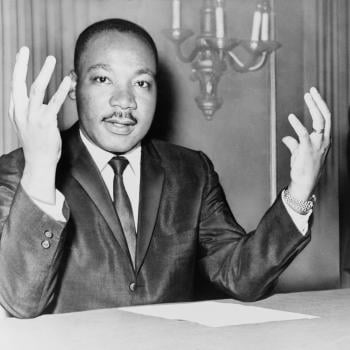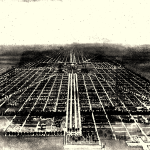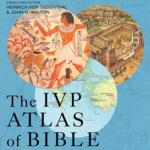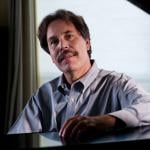There is no absolute definition of fundamentalism that fits every considered case like a litmus test. Like many other religious labels “fundamentalism” is an essentially contested concept and an indexical one (i.e., meaning depends on a context). Historically, however, American Christian fundamentalism is a movement that has undergone two major transitions that have changed its character. In the beginning (late 19th and early 20th centuries) “fundamentalism” was simply a transdenominational, conservative Protestant attempt to reassert traditional Protestant orthodoxy against the encroachments of liberal theology and higher biblical criticism in the Protestant denominations and seminaries. It was not separatistic (even if some people associated with it did separate from their denominations and institutions).
During the mid-1920s several events influenced the fundamentalist movement that changed its character. For one thing, premillennialism was added to the list of fundamentals of the Christian faith–as a litmus test to discern who is and who is not authentically biblical in theology. One person who did this was the great William Bell Riley of First Baptist Church and the Northwestern Schools in Minneapolis. Together with R. Frank Norris of Fort Worth and others Riley largely succeeded in taking over the fundamentalist movement. Others like J. Gresham Machen (not a premillennialist) continued to call themselves fundamentalists, but not-so-gradually the term came to be associated for the most part with this new, narrower and aggressive approach to defining Protestant orthodoxy.
Evidence of this change can be found in the booklets entitled The Fundamentals published in 1910 and sent free of charge to thousands of pastors, youth workers and YMCA directors. Among the authors were some NOT considered true fundamentalists by later standards: James Orr of Scotland and E. Y. Mullins of Southern Baptist Theological Seminary to name two.
Throughout the 1930s, largely as a result of the disastrous Scopes Monkey Trial of 1925 “fundamentalism” became increasingly militant (not violent) in its anti-modernism and increasingly separatistic from mainstream religion, society and other Christian groups.
When Harold John Ockenga and others formed the National Association of Evangelicals in the 1940s they invited the leading fundamentalist preacher of the day, Carl McIntire, to join, but he refused because the NAE was to include Pentecostals and others he did not consider authentically evangelical. This was the major parting-of-the-ways between fundamentalists and what the fundamentalists called “neo-evangelicals” (which I prefer to call post-fundamentalist evangelicals).
Around this time it became apparent that there was no litmus test for distinguishing between fundamentalists and evangelicals; there was a sense in which both were both. Fundamentalists were evangelicals and evangelicals were fundamentalists–in the broadest senses of the words. However, increasingly, self-identified fundamentalist leaders such as McIntire, Bob Jones and John R. Rice (and later Jerry Falwell) eschewed the “big tent” approach to evangelical ecumenism practiced by Billy Graham, Carl F. H. Henry, Harold John Ockenga and other movers and shakers of the new evangelical coalition.
Several issues seemed to serve as distinguishing characteristics between post-WW2 fundamentalists and post-WW2 postfundamentalist evangelicals. One was evolution; many evangelicals allowed for some degree of evolution and a non-literal interpretation of the first few chapters of Genesis. Bernard Ramm’s 1956 (?) book The Christian View of Science and Scripture was an evangelical manifesto against a completely literalistic interpretation of Genesis 1-3. Around the same time Fuller Seminary president E. J. Carnell published The Case for Orthodox Theology in which he labeled fundamentalism “orthodoxy gone cultic.” Increasingly throughout the 1950s, 1960s and 1970s self-proclaimed fundamentalists and self-proclaimed evangelicals sent their separate ways as the former refused to cooperate with Billy Graham crusades, Youth for Christ, etc., because these evangelical organizations were considered too secular or too inclusive.
Biblical inerrancy was another flashpoint of controversy between fundamentalists and evangelicals during this time. Fundamentalists insisted on it as a hallmark of authentic evangelical faith while many, if not most, postfundamentalist evangelicals did not. Carl Henry openly declared that belief in biblical inerrancy was NOT necessary for evangelical faith even as he argued that it is important. The National Association of Evangelicals did not write inerrancy into its statement of faith. In the early 1960s Fuller Seminary dropped inerrancy from its statement of faith.
The late 1970s witnessed two turning points in this story. Formerly separatistic fundamentalists began to call themselves evangelicals and insert themselves into the conservative ranks of evangelicals. They were welcomed in by many conservative evangelicals. One notable example is Jerry Falwell who previously had practiced “biblical separation” from fellow Christians who did not believe and practice exactly as he did. He brought some of that separatistic approach with him as he entered the evangelical world and began announcing himself as an evangelical spokesman.
Another turning point was the publication of The Battle for the Bible by former Fuller Seminary professor and Christianity Today editor Harold Lindsell (1976). This was a harsh polemic against evangelicals who did not affirm biblical inerrancy in the way he meant it. Lindsell criticized Robert Mounce, among others, for qualifying inerrancy in a way that the Chicago Statement later qualified it. (Mounce’s articles about inerrancy were published in Eternity magazine in the early and mid-1970s.) Lindsell’s book launched a purge of evangelical colleges, denominations and seminaries over the issue of inerrancy. Even Carl Henry took strong exception to making inerrancy a litmus test of authentic evangelicalism.
Beginning with Lindsell’s book “big tent” evangelicalism underwent (and is still undergoing) a series of heresy hunts–attempts by conservative evangelicals acting like fundamentalists to oust fellow evangelicals from the movement. One was the attempt to strip Westmont New Testament scholar Robert Gundry of his membership in the Evangelical Theological Society even though he wholeheartedly signed its statement of faith. He resigned his membership instead of putting the ETS through a series of trials. It was at that time I was on the cusp of joining the ETS and backed away. Around the same time Gundry’s brother Stan was harshly criticized because his wife published a book advocating equality of women with men in home and church and society. Gundry taught at Moody Bible Institute and he resigned rather than put the Institute through a long, protracted battle over this issue. Other, similar heresy-hunts ensued with the result that many of us became convinced that the spirit of Carl McIntire was winning within the evangelical movement. This became especially apparent when the Southern Baptist International Mission Board required all emplyees including missionaries to sign a statement that they do not speak in tongues even in private.
What has become apparent to some of us is that gradually, since 1976, people with a fundamentalist approach to fellow Christians, including fellow evangelicals, has invaded and gained power within the evangelical movement. In some cases this has included unethical treatment of fellow evangelicals. I have been subjected to this on several occasions when, for example, I have been misquoted or words have been put in my mouth by conservative evangelicals. People who know I am not an open theist have publicly labeled me one just because I have argued that open theism is not a heresy. In one case that I know of (and can prove) a fundamentalist evangelical invented a quote and attributed it to me and disseminated it to Southern Baptist state newspapers. When I challenged him to show where I ever said or wrote it, he could not, but he would not apologize or withdraw it.
During the long and protracted and very nasty battle over open theism in the Baptist General Conference and at Bethel College and Seminary one leading anti-open theism pastor told me to my face that he would get me fired if I did not stand with him against my colleague Greg Boyd and help him get Boyd fired. Unfortunately, at that time, Bethel did not have real tenure (it had five year contracts called “tenure”) and I felt very vulnerable. This pastor told me our face-to-face conversation was “not an inquisition” but later reported on it to the group of anti-open theism pastors of which he was a part.
When I talk about “fundamentalism” within evangelical circles I am referring primarily to a certain attitude and approach which, in my view, is more consistent with the narrow, harsh and even separatistic mentality of the fundamentalism that stayed out of the NAE when it was formed in the 1940s. And when I talk about “evangelicalism” I am usually referring to the “big tent” NAE-style evangelicalism of the 1940s through the 1970s that nurtured and shaped me. It still exists, but is embattled.












